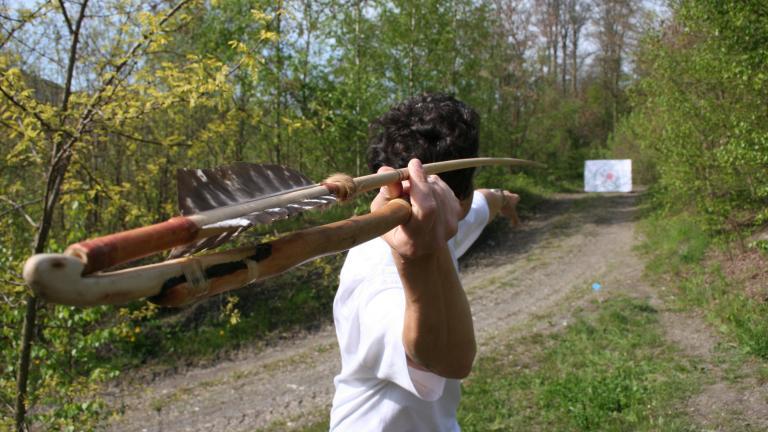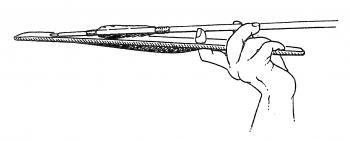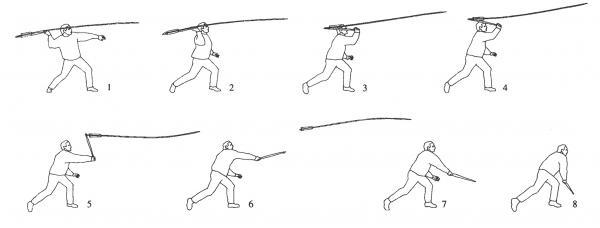Flash info
Panne de l'audiovisuel de Pincevent
Chers visiteurs, le spectacle audiovisuel de Pincevent est actuellement hors service et ne pourra vous être projeté comme à l'accoutumée. Veuillez nous excuser pour ce désagrément.


The spearthrower is a thrusting weapon used for hunting, fishing, and conflictual or non-conflictual human relations (i.e. homicides,legal sanctions, duels, raids, wars, etc. as well as for games and competitions, not forgetting certain rituals and ceremonies).
This weapon is made of a shaft or a little plank of various shapes combined with a device to maintain the projectile (hook, spur, gutter…). Depending on its use, the spearthrower can be associated with a spear, a harpoon or a multi-pronged spear.

The older specimens date back to Prehistoric times. In Europe, they were used between 22,000 and 12,000 B.C., essentially in the south-west of France but also in Germany, Spain and Switzerland.
In America, the spearthrower is known through the Andean rock art dating to 9,000 B.C. In Australia, the spearthrower is attested for at least 10,000 years, owing to the dating of Arnhem Land rock art.
Finally, ethnographic researches attest to the use of the spearthrower in various parts of the world between the 19th and the 20th century. The continuous use of this weapon from prehistory to the present is still questioned.
Compared to a hand-thrown spear, the spearthrower enhances the speed of the projectile and thus its efficiency.
It either aims at a powerful and precise shot at short or middle range (for hunting and fishing) or at long distance shot (for fighting) that is often less precise.
The spearthrower uses the lever arm principle that pushes the projectile for a longer distance, enhancing its speed and its impact strength.
